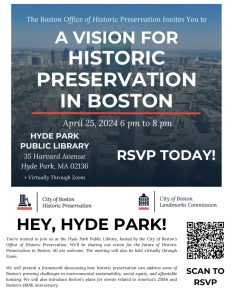
https://www.lostwomenofscience.org/episodes/dr-rebecca-crumpler-americas-first-black-female-public-health-pioneer
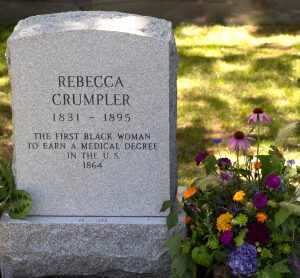
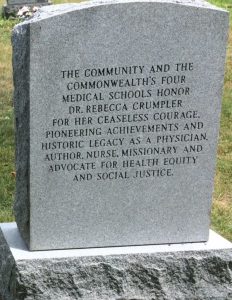
The Incredible Life of Nicholas Said
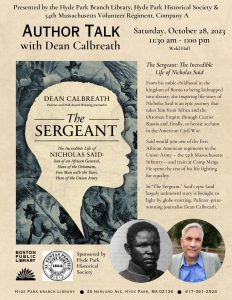
CANCELLED: Hyde Park Historic Cold Case
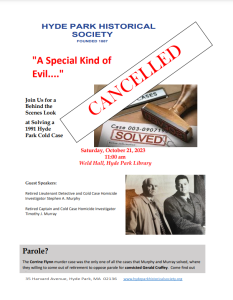
Sprague Pond History and Future
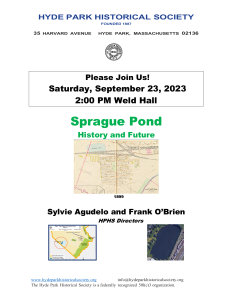
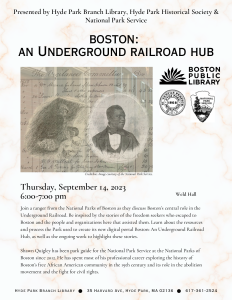
Attention Given to Weld/Grimké Gravestone
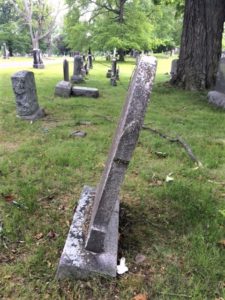 It came to the attention of members of the Hyde Park Historical Society (HPHS) that the gravesite of some of Hyde Park’s most historical figures, the Weld/Grimké family, needed cleaning and repair. Members of this family are interred on Evergreen Walk in Mount Hope Cemetery, Boston.
It came to the attention of members of the Hyde Park Historical Society (HPHS) that the gravesite of some of Hyde Park’s most historical figures, the Weld/Grimké family, needed cleaning and repair. Members of this family are interred on Evergreen Walk in Mount Hope Cemetery, Boston.
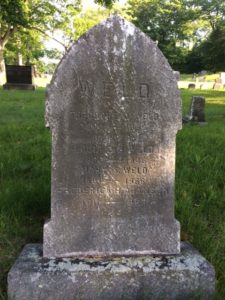
Theodore Dwight Weld (1805-1895), his wife Angelina Emily Grimké Weld (1805-1879), and her sister, Sarah Moore Grimké (1792-1873) moved to Hyde Park in 1864 and lived on Fairmount Hill.
The trio were early and ardent abolitionists and friends of William Lloyd Garrison, Lucy Stone, and Frederick Douglass. Together they wrote “American Slavery As It Is” in 1839, a comprehensive and exhaustive description of the state of slavery in the United States. Their book was used as the source material by Harriet Beecher Stowe for her book “Uncle Tom’s Cabin” which was influential in changing the tide of public opinion on slavery prior to the Civil War.
As a result of the sisters’ experience on the lecture circuit demanding freedom for enslaved people, they began to see the necessity of gaining equal rights for women and began to speak out. Angelina is known for being the first woman to address a state legislature in the US when in 1838 she spoke in the Massachusetts State House decrying slavery.
As prominent suffragists, in 1870 some 50 years before the nineteenth amendment granted women the right to vote, the Grimké sisters participated in a march and local election casting ballots in Hyde Park sending shock waves around the country. In 2019 the Hyde Park Dana Avenue bridge was dedicated to the sisters for their suffrage effort.
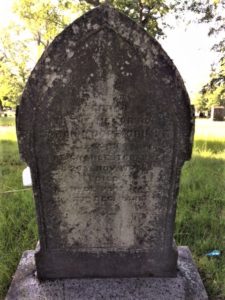
In the Summer of 2021, the Society began the process to have the grave site made fitting for these distinguished citizens. Kelly Thomas from the Historic Burying Grounds Initiative, Boston Parks and Recreation Department approved the project, and Kevin Duffy of Line and Stone Inc, Monument and Sculpture Service, Arlington MA, completed the work.
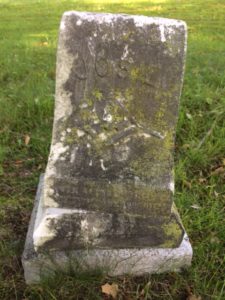
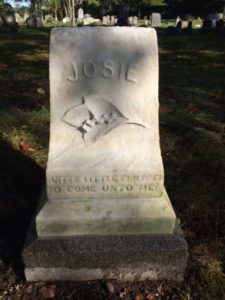
The Weld name on the front side of the upright gravestone faces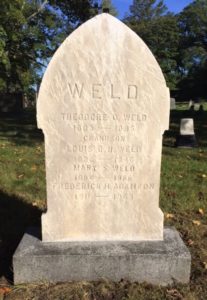 Evergreen Walk and lists four family members, although eleven are interred in the family plot. The backside of the stone has information solely on Sarah Grimké. It is likely that her name originally faced the road, she being the first person in the family to die. Twenty-three years later the Weld name was added, and that side now faces the road.
Evergreen Walk and lists four family members, although eleven are interred in the family plot. The backside of the stone has information solely on Sarah Grimké. It is likely that her name originally faced the road, she being the first person in the family to die. Twenty-three years later the Weld name was added, and that side now faces the road.
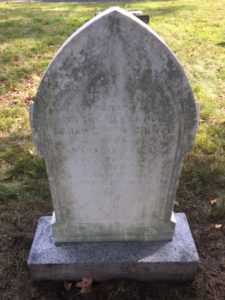
Interestingly, Angelina Grimké Weld’s name is omitted on the family gravestone because she may have requested so. Theodore Weld followed her instructions and buried her in plain clothing with a simple graveside ceremony. The HPHS funded and installed a simple flat gravestone only to recognize Angelina, not to glorify her.
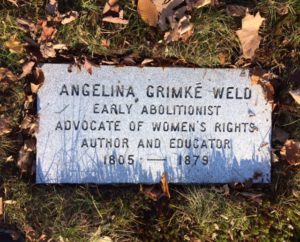
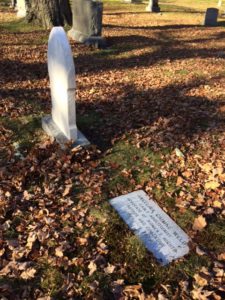
When the Hyde Park Branch Library opens for community meetings, lecture series hosted by the Hyde Park Historical Society will resume in Weld Hall.
If you would like to join or support the work of the HPHS you do so on this site. Questions comment to info@hydeparkhistoricalsociety.org.
*Evergreen Walk is .4 mile from the front gate. Follow Central Avenue which is to the left of the flag pole. Go up the hill and turn left on Grove Avenue ( .3 mile). Take the 1st right and the gravesite will be on on your right side up near the 3rd tree.
Hyde Park Library’s Historic Garden
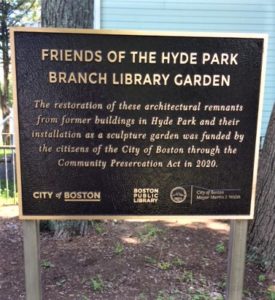 In 2019, The Friends of the Hyde Park Library received Community Preservation Funds (CPA) from the city of Boston to transform an unused section of the library’s lawn into an historic garden incorporating artifacts of local significance. HPHG-brochure
In 2019, The Friends of the Hyde Park Library received Community Preservation Funds (CPA) from the city of Boston to transform an unused section of the library’s lawn into an historic garden incorporating artifacts of local significance. HPHG-brochure
For many years library patrons had asked about the two figures and the Corrigan stone lying in the mulch on the Everett Street side of the library.
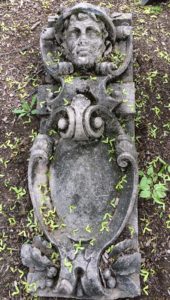
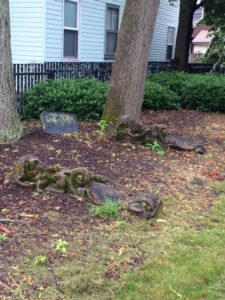
Most thought the objects to be gravestones. In fact, they are figures of Mercury, the god of transportation and commerce, from the demolished railroad station. The figures were donated to the library by Edward Gonski who in 1974 saved them after demolition. EdRemembers
The Hyde Park Historical Society (HPHS) wasn’t sure if the figures were worth saving, so they put the question to Jonathan L. Fairbanks, the Curator of the American Decorative Arts and Sculpture Department at the Museum of Fine Arts Boston. His response was ‘Yes’. MFALetter_ 1976
The figures were removed in 2019 by Daedalus Inc., monuments, sculptures and fine arts conservators from Watertown, MA. This firm previously repaired, cleaned and remounted the Civil War monument in Fairview Cemetery.
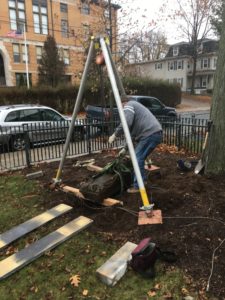
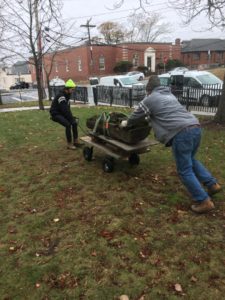
Brief History of the 1914 Station
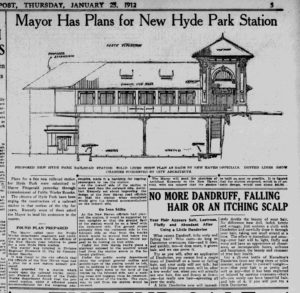 After years of negotiation, design change, economic worries and the town’s annexation to Boston, the New York New Haven & Hartford Railroad Company (NYNH&H) Hyde Park station opened on April 15,1914. HP Businessmen -1912 , Contractor- 1912 HPGT- 4-15-1914 station opened
After years of negotiation, design change, economic worries and the town’s annexation to Boston, the New York New Haven & Hartford Railroad Company (NYNH&H) Hyde Park station opened on April 15,1914. HP Businessmen -1912 , Contractor- 1912 HPGT- 4-15-1914 station opened
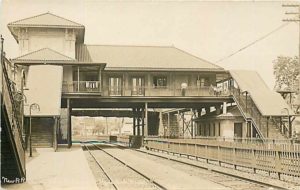
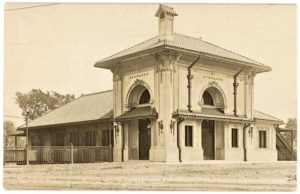
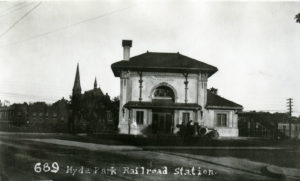
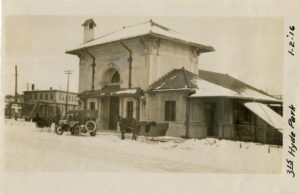
The entrance and ticket office was on Business Street and the main waiting area extended over the tracks so approaching trains could be seen from bother directions. There was a smaller waiting room on the inbound side.
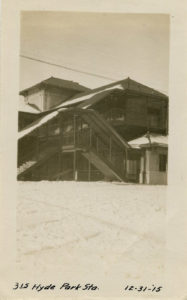
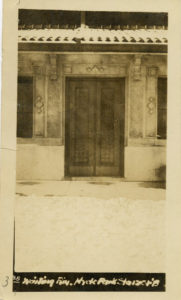
All 1915-1916 photographs in this article are from the Archives & Special Collection, University of Connecticut Library.
We’re unable to confirm the station’s architect even with assistance from New England railroad historian Robert Belletzkie and from the NYNH&H archivist at the University of Connecticut. The belief is that it is a redesign, by a railroad company engineer, of a Cass Gilbert station. 1911GilbertMention. Anthony Sammarco and an expert at the Cass Gilbert Society concurred. Note the similarity of the HP station with Gilbert’s 1908 Westchester Avenue station in the Bronx, New York.
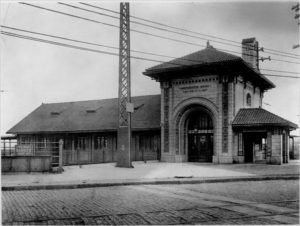
Railroad services declined in the twentieth century with the expanded use of airplanes, trucking routes and cars. Railroad companies reduced their losses by discontinuing routes and by doing minimal maintenance. Vandalism at the station increased. At one time the HP station was considered the pinnacle of elegance and functionality, only to be abandoned and became an eyesore.
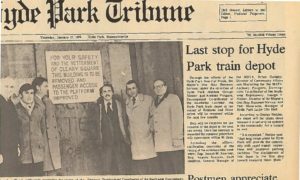
Since 1973, the Massachusetts Bay Transit Authority owned the commuter station area. The depot was demolished on July 9,1974. HPTribune7_11_1974
The only remaining structures are iron posts at the top of the stairways on River Street.
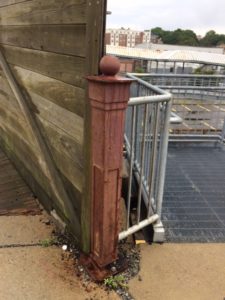
Hyde Park’s Clearly Square Station 2019
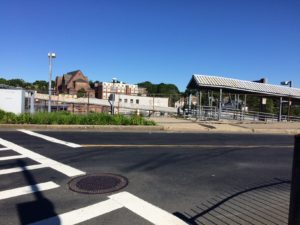
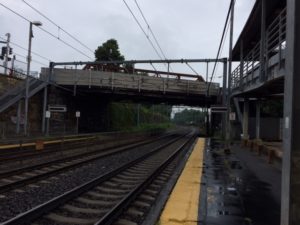
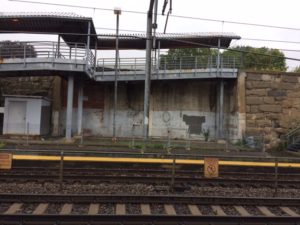
Mercury at the Hyde Park Library- 2020
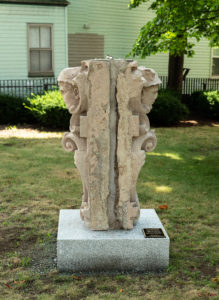
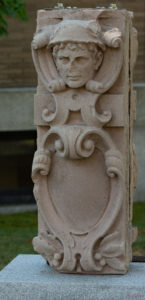
The Corrigan Stone
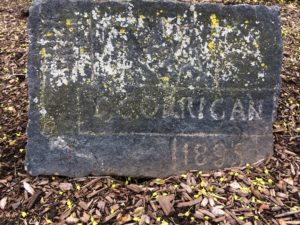 In 2006, this piece of granite was donated to the Hyde Park Historical Society by Virginia Foley who was given to hold for safekeeping by Atty William Slattery, Sr. Both attended St. Catherine’s School where the Corrigan stone was part of the foundation.
In 2006, this piece of granite was donated to the Hyde Park Historical Society by Virginia Foley who was given to hold for safekeeping by Atty William Slattery, Sr. Both attended St. Catherine’s School where the Corrigan stone was part of the foundation.
In 1895, a satellite school for the Most Precious Blood Parish was built on the corner of Washington Street and Foster Street which in 1930 became ChittickRd- 1930.
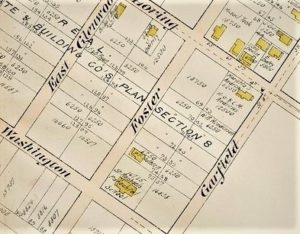
The school, taught by the Sisters of Charity of Nazareth, had four rooms, and five or six grades. Most students transferred to the central school on Maple Street and graduated after the eighth grade. 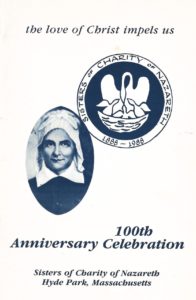 In 1921, after the retirement of Mother Catherine Spaulding, the name of the school in Corriganville was renamed, St. Catherine’s.
In 1921, after the retirement of Mother Catherine Spaulding, the name of the school in Corriganville was renamed, St. Catherine’s.
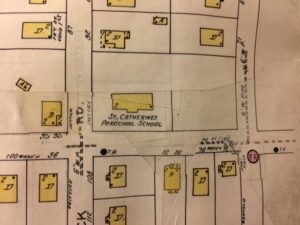
Read more about the 1981 centennial celebrations for Most Precious Blood Parish (MPB), and for the Sisters of Charity of Nazareth in material in the local history room at the HP library.
In 1954 the school was transferred to the St. Pius X parish in Milton. The archivist at the Archdiocese of Boston was helpful with the next piece of the puzzle. A memorandum from June 10, 1966 states “ the old school will be torn down ….and the land which consists of approximately 33,000 square feet will be sold.” The demolition was completed on Sept 16, 1966 by Duane & Company, and all salvage material became their property. The land was sold to Stephen J. Joyce of Milton who planned to build 5 homes on the property. Atty Slattery likely took the Corrigan stone from the demolition site.
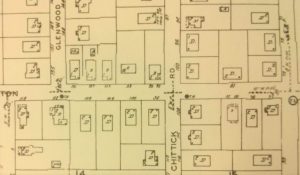
There was another satellite school in Readville that transferred to St. Anne’s Parish in 1921.
Thomas Corrigan (1845-1902) and his brother John (1836-1891) came to Hyde Park from Ireland in the late 1860’s. It is recorded in the 1st HP Annual Report that John’s resident tax for 1868 was $5.20. They worked as laborers and prospered which each owning a contracting /masonry business.
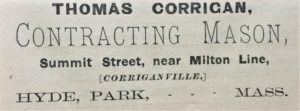
Thomas Corrigan built hundreds of foundations in the area. His measurements and calculations for the masonry jobs were included in estate material given to the HP Historical Society.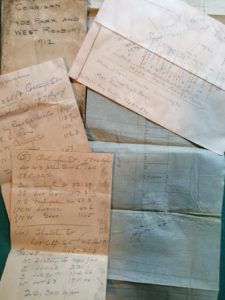
Thomas Corrigan owned property in many sections of HP.
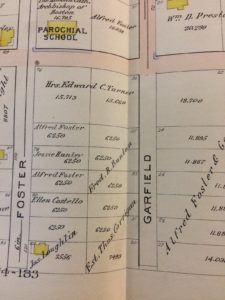
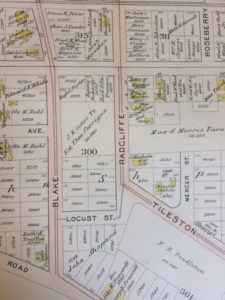
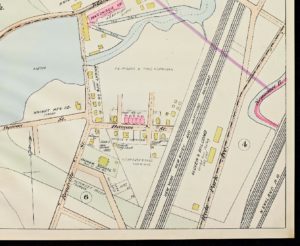
The neighborhood east of Water Street, now Truman Highway from about Dana Ave to Walcott Road was nicknamed Corriganville .
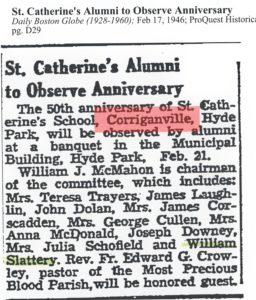 Corriganville Improvment Assoc 1925, CorriganvillTeam-1938
Corriganville Improvment Assoc 1925, CorriganvillTeam-1938
Thomas Corrigan was a generous donor to the Catholic church throughout his life and also after his death . page 1 TC will, page2 TC will
His obituary mentioned that he loved the United States and this area. He represented this feeling on the foundation stone, with a folk art image of a flag and a maple tree. Thomas Corrigan is buried in Mount Calvary cemetery, and John’s family is buried at Fairview Cemetery.
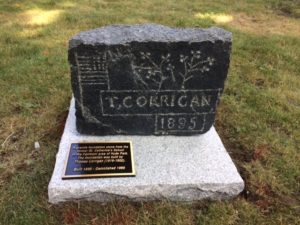
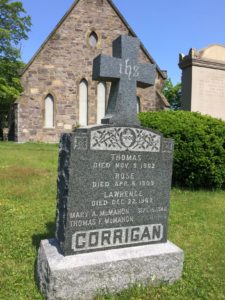
Thomas’s nephew, Thomas H. Corrigan (1867-1923) also a contracting mason, kept up the family tradition of supporting the church and there’s a small plaque near the church steps with his name.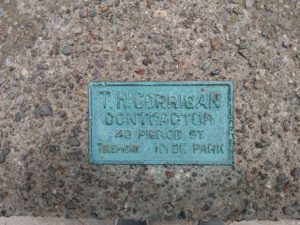
If other outdoor artifacts of significance to Hyde Park are brought to the Historical Society’s attention, they will be considered for placement in the library’s historic garden. In time, native plants will also be added.
Points of Interest in Fairview Cemetery
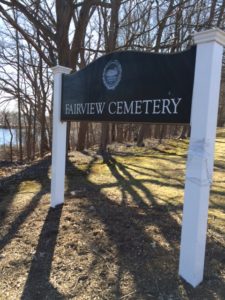 place to wander for exercise, nature and history. The Friends of the Hyde Park Library and the Hyde Park Historical Society have prepared a self guided tour of gravesites and monuments of interest. The decision to do this developed from interest generated by the fund raising project to purchase a grave stone for Dr. Rebecca Lee Crumpler, the 1st Black women physician in the US. (1864). You can learn about this successful Crumpler Fund project at friendshplibrary.org.
place to wander for exercise, nature and history. The Friends of the Hyde Park Library and the Hyde Park Historical Society have prepared a self guided tour of gravesites and monuments of interest. The decision to do this developed from interest generated by the fund raising project to purchase a grave stone for Dr. Rebecca Lee Crumpler, the 1st Black women physician in the US. (1864). You can learn about this successful Crumpler Fund project at friendshplibrary.org.Learn about some of the people buried in Fairview Cemetery by downloading this self guided tour.
Seaman W. Hughson Royal Naval Reserves. Born in Scotland. Died of the Spanish Flu aboard ship in 1918. Listed in the Commonwealth (countries) War Graves Commission.
Rebecca Crumpler (1831-1895) The 1st Black woman physician in the U.S. In 1884 wrote A Book of Medical Discourses in Two Parts.
Arthur Crumpler (1835-1910) Escaped from slavery in Virginia. Perpetual student, church activist and HP landowner since 1870.
Adolph Robert Kraus (1850-1901) German American sculptor known for the Boston Massacre Memorial on the Boston Common and monuments (Randidge, Wirth, Heinzen) in Forest Hills Cemetery.
Emma Thomas Bond (1846-1926) Enslaved in VA. Moved North in 1870. Matriarch of Homelands and Waterways: The American Journey of the Bond Family 1846-1926 by Adele Logan Alexander (1999).
USS Maine Memorial This plaque was made from metal salvaged from the ship that was destroyed in Havana Harbor on 2/15/1898, shortly before the start of Spanish-American War.
Joseph King Knight (1849-1927) President MA Dental Assoc. Major role on the building committees for the Congregational Church (1910), the Civil War monument (1911) and the HP railroad station (1914).
John Robert Bond (1846-1905) Biracial teenager from Liverpool, enlisted in the Union Navy. Active in HP and the veteran’s community. His family were friends with the Crumplers and the Trotters.
Civil War Monument (1911) MH Mosman’s walking figure is quite different from the usual uniformed, solemn standing soldier.
Amos Brainard (1824-1905) Brainard Milling Machine Co. Owner of many manufacturing patents. The 1st president of the HPHS.
John Joseph Enneking (1841-1916) Born in Ohio, wounded in the Civil War (Union). Studied fine art painting in Boston and alongside Monet and Renoir in France. Described as the first successful American Impressionist painter. Known for his New England landscapes and richly painted atmospheric sunsets.
Charles F. Jenney (1835-1900) Lawyer, judge, HP library trustee and Founder of the HP Historical Society.
David Higgins (1828-1897) Born in PEI, Canada. Served with the 6th Mass. Inf. Reg. Built many of the first homes on Fairmount Hill. His parlor on Fairmount Avenue was the 1st neighborhood classroom.
Thomas M. Menino (1942-2014) Five Term Mayor of Boston from 1993 to 2014. A lifelong resident of HP and known as the People’s Mayor and Urban Mechanic. Author of Mayor for a New America.
Gertrude S. Galloupe (1897-1984) Born in Sweden. US Navy Reserve Yeoman(F) at the Boston Navy Yard during WWI.
Flora D. Holtham (1885-1918) Died on the SS City of Athens struck by a French cruiser in dense fog on route from NY to Savannah. O Olive Gertrude Homans (1879-1899) Child actress lived on Gordon Avenue in HP. Best known for her role as Little Lord Fauntleroy.
William Henry Barritt (1848-1920) Portrait photographer and documenter of HP’s history. Photographs on HPHS website.
James Monroe Trotter (1842-1892) Born enslaved, grew up in freedom. Officer in 55th Mass. Inf. Reg. Teacher, postal worker, music historian and HP landowner. In 1887 was appointed Recorder of Deeds for Washington DC, by President Grover Cleveland.
William Monroe Trotter (1872-1934) Grew up in HP. At Harvard he was the 1st Black to receive Phi Beta Kappa honors. Co-founder/editor of the Boston Guardian. An activist for equality and social justice.
Geraldine Pindell Trotter (1872-1918) Born into Boston’s Black upper class. A civil rights activist, editor, and philanthropist.
Brigadier General Henry Beebee Carrington (1824-1912). Helped organize the Republican Party in 1854. Union officer in the Civil War. Commander of the Mountain District during Red Cloud’s War. He was a lawyer, professor, and the author of Washington the Soldier and Battle Maps and Charts of the American Revolution.
If you visit this Spring you will see daffodils at most of these graves and at a few others. This is the 1st year we’d planted bulbs, donated by the City of Boston, to brighten up and beautify the city. Hopefully the bulbs survived the winter and the squirrels.
